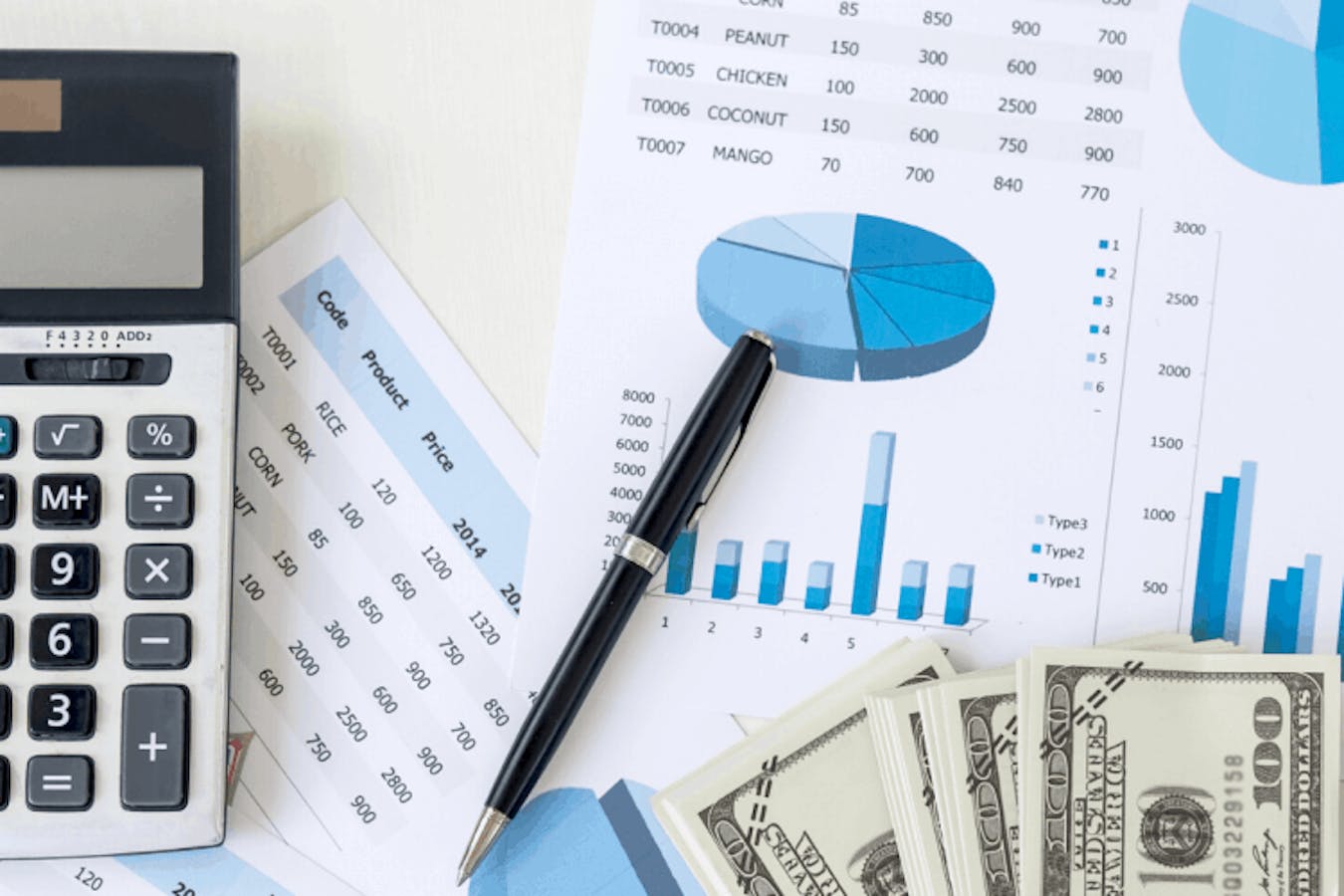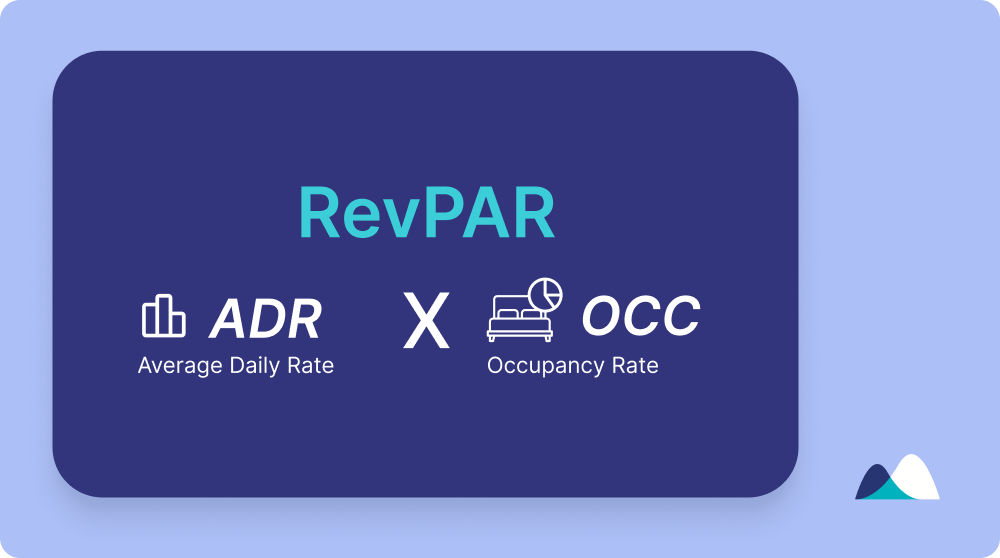RevPAR: What it is, how to calculate it, and how to use it to boost your earnings
How can you improve the profitability of your hotel? Most tourism entrepreneurs − from hoteliers to property managers − look to the world of revenue management for answers to this question

One of the most well-known and widely used indicators of Revenue Management is the RevPAR. This is used to obtain an overall assessment of the performance of the accommodation and to make comparisons and evaluations both with different time periods and with other facilities.
In this article we will give a definition of what RevPAR is, its formula, how it is calculated, and how you can use it to increase the profitability of your accommodation.
What is RevPAR?
RevPAR stands for Revenue Per Available Room. It is a summary indicator that gives us an accurate reflection of the health of any hospitality facility, and measures its economic success.
It is a very important key performance indicator (KPI) for Revenue Management, and is widely used by hotel consultants to understand the performance of a facility both on an absolute level and relative to a benchmark.
Since RevPAR in fact refers to a room's ability to generate revenue, it can be calculated and compared regardless of the total number of rooms a facility has available.
This makes it ideal, for example, for comparison with benchmark competitors in the same market or between different facilities within the same group.
How is RevPAR calculated?
The calculation of RevPAR is extremely simple and can be derived through two procedures. The first method is calculated by dividing the facility's turnover by the number of available rooms:

The second method involves multiplying two other performance indicators well known to revenue managers, ADR (Average Sales Rate) and OCC (Occupancy Rate):

How to interpret the RevPAR value
This example is intended to help you understand why, for the purpose of increasing revenue, it is critical to keep an eye on RevPAR rather than just average selling price (ADR) or occupancy rate (OCC%) alone.
For simplicity, let us evaluate the cases of 3 exactly identical establishments, each with 10 rooms but with different ADR and OCC.
- Hotel 1 – OCC 100% – ADR €80 → RevPAR €80
- Hotel 2 – OCC 80% – ADR €95 → RevPAR €76
- Hotel 3 – OCC 60% – ADR €140 → RevPAR €84
As you may have noticed, high occupancy does not always translate into good profitability for the property. In this example Hotel 3, despite selling only 6 out of 10 rooms, achieved a higher average revenue per room (RevPAR) than Hotel 1 and Hotel 2.
It is also worth noting that higher RevPAR also corresponds to higher turnover. Specifically:
- Hotel 1 – Turnover €800 (RevPAR 80 x Available rooms 10)
- Hotel 2 – Turnover €760 (RevPAR 76 x Available Rooms 10)
- Hotel 3 – Turnover €840 (RevPAR 84 x Available Rooms 10)
Why is RevPAR so important?
Although the calculation of RevPAR is simple, some may still think that it is a superfluous figure. So would it suffice to take into account only the occupancy rate or ADR to evaluate your Hotel's performance? In our opinion, no.
Thanks to RevPAR you are able to correctly evaluate the overall success of your business and pricing strategy at a glance.
If RevPAR increases, it unequivocally means that the Hotel's profitability − limited to earnings from room sales − has increased. On the other hand, an increase in ADR or OCC, when taken individually, could not offer you the same certainty.
RevPAR is calculated relative to a specific time period, so you can use it to benchmark your facility's productivity across different times (days, weeks, months, seasons, years…).
Reasoning in business terms, the ultimate goal of every business owner like you is − trivially − to see this indicator steadily increase year on year.
6 Ways to Increase RevPAR
You can take advantage of some very effective strategies to increase RevPAR, which directly act on increasing your facility's occupancy rate or average sales rate.
Here we’ll recommend 6 of them.
1. Occupancy on "weak" dates
If your occupancy rate is not 100%, try setting a lower rate on those dates to stimulate occupancy. Monitor the daily RevPAR value and see if this move actually brings about an increase.
2. Price on "strong" dates
If your occupancy rate at certain times historically reaches toward 100%, try setting a higher rate on those dates to put a filter on demand and select only the most profitable requests. If occupancy still remains at 100%, the RevPAR value for that date will increase.
3. Breadth of supply
Creating different types of rooms and offering ancillary services allows up-selling and cross-selling strategies to increase the revenue generated from a single room. In addition, products that cover multiple ranges or multiple targets can better meet different customer needs and also help increase occupancy.
4. Offer value
Consider implementing services that add value to your rooms (in-room whirlpool, rich breakfast included, parking included, spa access at a discounted rate, etc.) and base your communication on value to attract less rate-sensitive customers.
5. Online Reputation
Whether we like it or not, the reputation of the accommodation directly affects the volume of inquiries. Based on a recent study by Cornell University in New York, a hotel that improves its reviews by 1 percent can see RevPAR increase by up to 1.42 percent.
6. Dynamic Rates
Dynamic pricing allows you to maximize a property's RevPAR by adjusting supply to demand in real time. Use a Revenue Management System that is able to change room rates daily or multiple times throughout the day, based on real-time market demand data.
Beyond RevPAR: TRevPAR, CostPAR, GOPPAR
We have seen that RevPAR is an excellent productivity index for the most important department in your facility, the room division.
However, a hotel is not just rooms. Revenue from ancillary services, for example, is increasingly important and must be included in business reasoning.
That is why TRevPAR, short for Total-RevPAR, is also often used today. This index, a product of RevPAR, also incorporates the additional revenue figure that each room brings in through the sale of complementary services.
TRevPAR is calculated simply by dividing the total turnover of the facility (including extra services) produced in a certain time frame, divided by the number of rooms available in that same time frame.
TRevPAR = Total turnover / Total rooms available
What about costs?
So far we have talked about turnover and occupancy, but costs have not been taken into account.
If marginality matters more than productivity for its own sake, then costs are just as important as turnover.
CostPAR, which stands for Cost Per Available Room, is the "negative" twin of RevPAR and indicates the value of costs per available room.
It is obtained by summing all costs, fixed and variable, related to the preparation and use of a room.
Fixed cost per unit (related to the reference period) = Total fixed costs (calculated per month/season/year) / Available rooms (in the same reference period)
Unit variable cost (relative to the reference period) = Total variable costs (calculated per month/season/year) / Available rooms (in the same reference period)
CostPAR = Fixed unit cost + Variable unit cost
Once you have the CostPAR, you can subtract it from the RevPAR (RevPAR-CostPAR) to monitor the accommodation’s ability to produce business profit.
If the difference is positive, the facility generated margins in the reporting period. If, on the other hand, the difference is negative, it means that costs have exceeded revenues and the business is operating at a loss.
In another article, we discuss in more detail how to calculate costs in hotels.
Another way to measure the profitability of an accommodation business is to use GOPPAR, which stands for Gross Operating Profit Per Available Room.
Compared to the difference between RevPAR and CostPAR, GOPPAR takes into account the total operating revenues and costs of the facility, not just those of the room department.
In fact, GOPPAR represents the difference between total costs and revenues after taxes, interest and depreciation (similar to EBITDA).
To obtain GOPPAR, the difference between all revenues and costs net of capital, financial, and tax revenues is considered. This difference represents GOP (operating margin) and is divided by the number of available rooms in the reporting period.
GOPPAR = GOP / Available Rooms
Of all the ratios mentioned, GOPPAR is the most comprehensive and best summarizes a facility's ability to produce profits.
RevPAR, CostPAR and GOPPAR are key indices for understanding the state of your lodging business’s shape.
However, they can lead to confusion and anxiety if you don't know how to use them.
With Smartpricing, you can analyze your data more easily and stress-free.
Book a free demonstration with one of our consultants now, and find out how Smartpricing can help you unlock your establishment's full potential!
